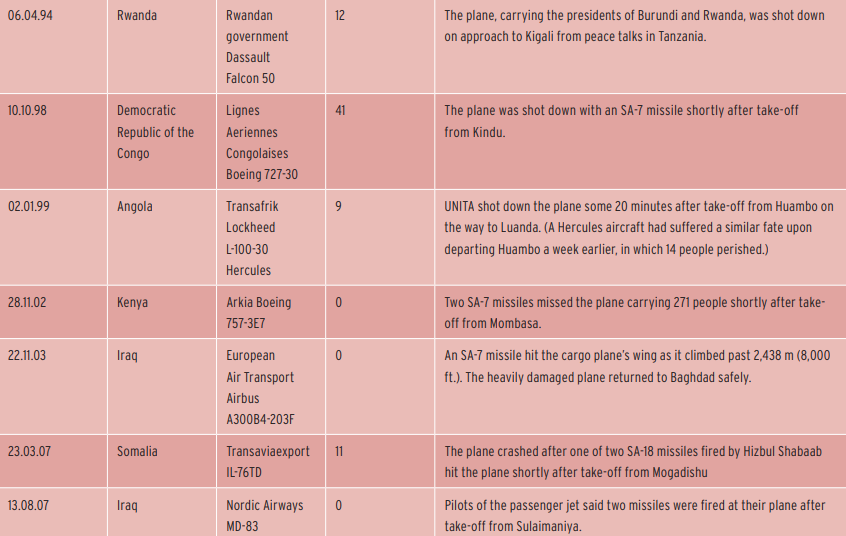1. MANPADS attacks on civilian aircraft
MANPADS and their missiles were built in large numbers and transferred widely, often without stringent controls or oversight. More than 100 countries—and non-state actors—possess these weapons (Small Arms Survey, 2004, pp. 83-87). Of the 500,000–750,000 MANPADS believed to be in circulation, some 99 per cent are estimated to be in state inventories (GAO, 2004, p. 10). But many governments and regional organizations deem the stockpile management procedures for tens of thousands of these weapons to be wanting (see, for example, Schroeder, 2007). The United States alone has destroyed more than 32,000 MANPADS since 2003 in more than two dozen countries, and has improved security in depots holding thousands more missiles (USDoS, 2010, p. 7; USDoS, 2009). More than 30 non-state armed groups in more than 20 countries are reported to possess—or have possessed—MANPADS (Small Arms Survey, 2008, pp. 32–33), the result of deliberate government policy, seizure on the battlefield, lax export controls, and stockpile mismanagement. MANPADS are designed to function for many years. A shelf-life of ten or even twenty years is not unheard of. The two SA-7b MANPADS used in the November 2002 attack against the Israeli airliner in Mombasa, Kenya, reportedly comprised critical components manufactured in the 1970s (see, for example, United Nations, 2003, pp. 29–30; Richardson, 2003) (See Table 1 for examples of MANPADS attacks on civilian aircraft). Storage conditions can affect the longevity of the system.
![]()

In a brainstorming session, look for innovative solutions to protect civilian aircraft against MANPADS.